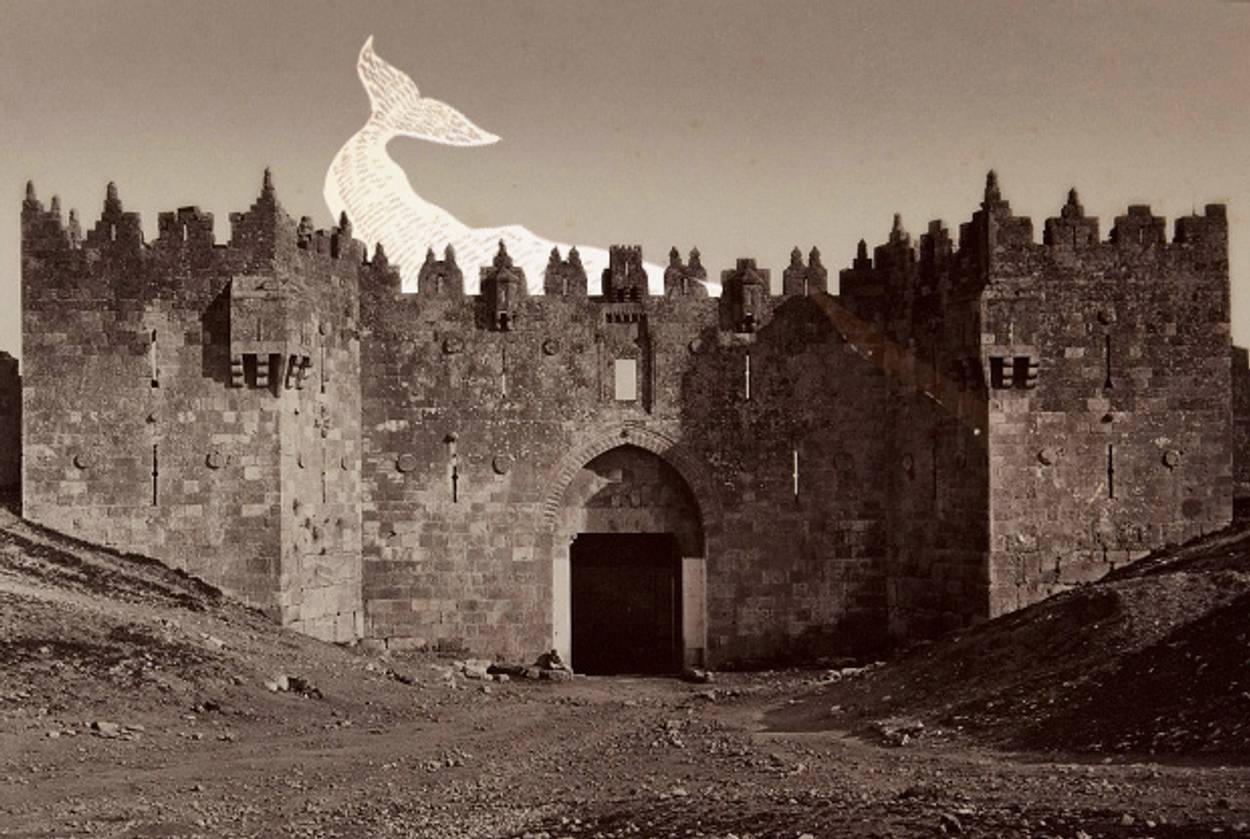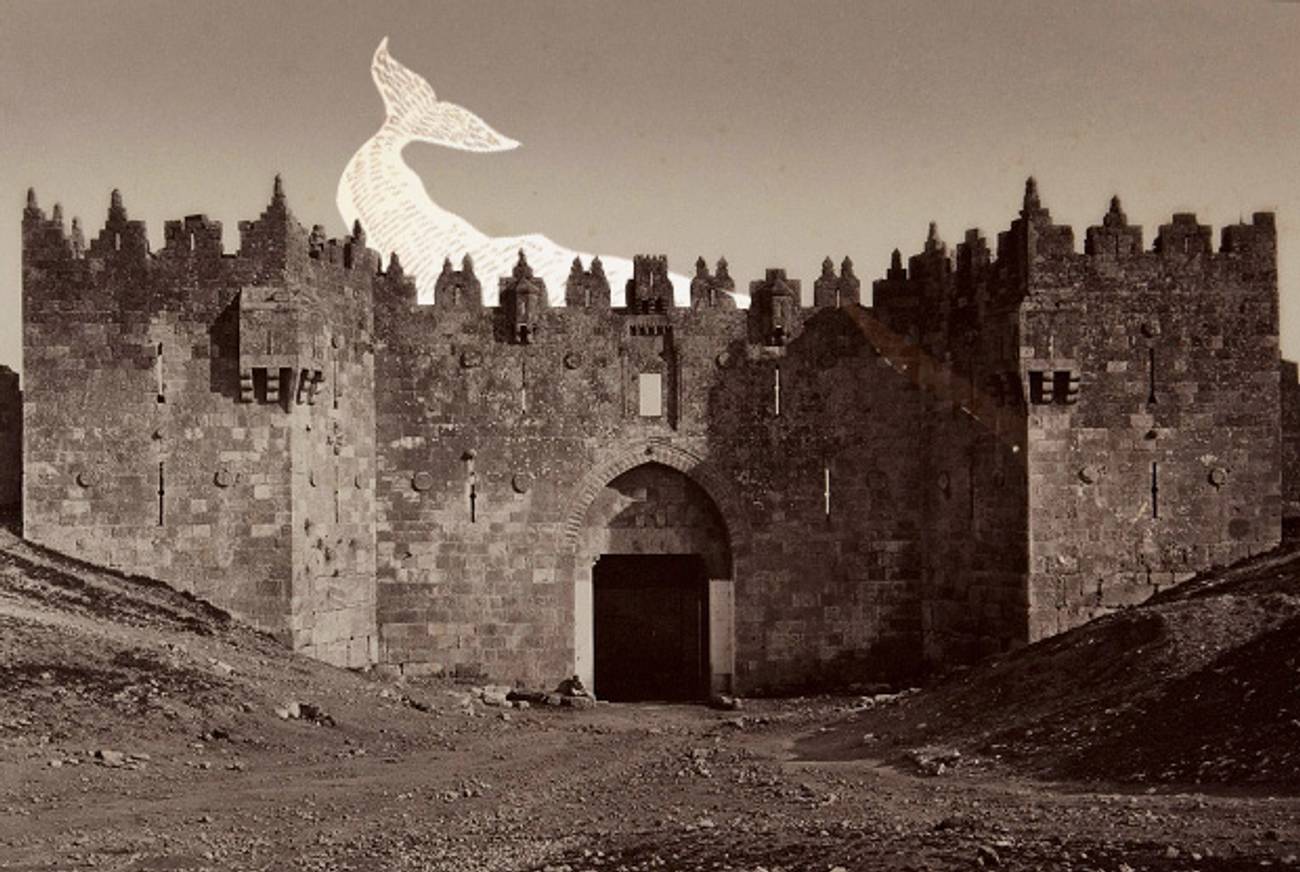Melville in Jerusalem
The Moby-Dick author sought spiritual connection on an 1857 Holy Land trip. He found dust and rocks instead.




Herman Melville, the popular writer of adventure stories, all but lost his readership with the publication of Moby-Dick; or The Whale. “Mr. Melville has survived his reputation,” one critic wrote in 1851 of the “imposing” novel, with its diatribes, tangents, and verbosity. “If he had been contented with writing one or two books, he might have been famous, but his vanity has destroyed all his chances for immortality, or even of a good name with his own generation.” While some reviewers recognized the greatness of Moby-Dick, it failed to achieve the success Melville had hoped for, selling only a scant 3,100 copies during his lifetime. “Though I wrote the Gospels in this century,” he lamented to his friend Nathaniel Hawthorne, “I shall die in the gutter.”
Melville never fully recovered from the disappointing response to Moby-Dick. In 1857, upon the suggestion of his wife, Melville set off to Europe and the Middle East in the hopes of finding some clarity, inspiration, and cheer. It was on this trip that Melville visited Jerusalem, a place that did not live up to the author’s high expectations. The journal Melville kept on his journey, along with Clarel: A Poem and Pilgrimage in the Holy Land, the epic the trip helped shape, illustrate what a strange and mystifying place Jerusalem was for the 19th-century traveler. But Melville’s descriptions and reflections, his spiritual longing and ultimate disenchantment, also hint at the development of a remarkable relationship—that between the American tourist and the Holy Land.
***
When Melville wrote Moby-Dick,he was living in Pittsfield, Mass., a small New England town that is currently celebrating the life and work of the author with its summer-long Call Me Melville festival. But Pittsfield, in the wake of Moby-Dick’s poor reception, was not a happy place for Melville. His farm was losing money, and his career seemed to be in shambles. He followed Moby-Dick with Pierre (1852), another financial and critical disappointment, and then several stories for Harper’s New Monthly Magazine and Putnam’s Monthly Magazine, among them Bartleby the Scrivener (1853) and Benito Cereno (1855). Each short story hints at the author’s anger, despair, and exhaustion. Another novel, Israel Potter, published in 1855, did little to change his reputation or circumstances, and those closest to Melville grew increasingly worried; the writer seemed fatigued, unhappy, and even, some suggested, suicidal.
Given Melville’s anguished state, his wife, Elizabeth Shaw, proposed—and his father-in-law, Lemuel Shaw, chief justice of the Massachusetts Supreme Judicial Court, agreed to finance—a trip overseas. Melville had previously gone abroad to London in 1849, shortly before the completion of Moby-Dick, and had enjoyed the trip immensely. But that had been a different time in the author’s life; he was a successful novelist writing a book he believed would be immediately celebrated as one of the greatest works of the 19th century. Six years and many disappointments later, Melville had good reason to be down.
Nonetheless, on Oct. 11, 1856, Melville boarded the Glasgow, a steamer bound for England. As Howard C. Horsford recounts in his historical note to the Northwestern-Newberry edition of Melville’s journals (for which Horsford served as editor), Melville visited Hawthorne in Liverpool, and Hawthorne said afterward that Melville seemed “a little paler, and perhaps a little sadder” than he’d been before. But as Melville journeyed on, the trip appeared to revive his spirits. As he sails the Mediterranean in mid-winter, Melville’s exuberance is clear. In his journal, he notes “such weather as one might have in paradise,” of “stars shining with brilliancy,” and “gloriously clear” evenings. This attitude, though dotted with days of despair, generally continued through Constantinople, Alexandria, Cairo, and Rome.
And then Melville arrived in Jerusalem. His first description of the city: “unless knew it, could not have recognized it—looked exactly like arid rocks.” Melville had expected a place that felt closer to God than New York City or Massachusetts, a place of high sentiment and spirituality. Instead, he got dust and flies, and entry after entry indicates his chagrin: “How it affects one to be cheated in Jerusalem,” he wrote early on in his weeklong stay in the city. Later he wondered whether “the desolation of the land [is] the result of the fatal embrace of the Deity? Hapless are the favorites of heaven.” And later still: “The color of the whole city is grey & looks at you like a cold grey eye in a cold old man.”
Indeed, Melville’s ruminations on Jerusalem are sometimes so bleak as to be comical:
Stones of Judea. We read a good deal about stones in Scriptures. Monuments & stumps of the memorials are set up of stones; men are stoned to death; the figurative seed falls in stony places; and no wonder that stones should so largely figure in the Bible. Judea is one accumulation of stones—stony mountains & stony plains; stony torrents & stony roads; stony walls & stony fields, stony houses & stony tombs; stony eyes & stony hearts. Before you and behind you are stones. Stones to the right & stones to the left.
Melville’s journal portrays a hodgepodge of peculiar characters that run about the city’s streets, including pilgrims wearing “serious expressions,” old Arab men plowing in their shirttails, and Christian missionaries from the United States or England proselytizing in the streets. The most oft-repeated descriptors Melville affixes to these figures are strange and sad. “The whole thing is half melancholy, half farcical,” he writes of the city and its inhabitants, “like all the rest of the world.”
***
To be fair, Jerusalem wasn’t much to speak of in the 1850s. The city was part of the Ottoman Empire, and its fate was intertwined with that of the dying sultanate. Contemporary accounts of Jerusalem describe little infrastructure, terrible corruption, a lack of hospitals, and an absence of social amenities and order. Assault and theft were daily occurrences in and around the Old City, which, at the time of Melville’s visit, was all that existed of Jerusalem—development outside the Old City walls would not occur in earnest until the 1860s, when overcrowding made expansion beyond the Old City necessary. Melville’s description of a backwater pile of rocks full of dusty religious types is not that much of a metaphorical overreach.
But Melville’s view of the place was certainly clouded by his financial and artistic troubles, as well as the religious tensions he felt as a Christian traveling in 19th-century Jerusalem. While Melville was not a traditionally religious or observant man, theological questions dominate the author’s work. The philosophically inclined child of a Christian father and pious Calvinist mother, Melville held a complex theology, best described as something like devout agnosticism. “He can neither believe, nor be comfortable in his unbelief,” Hawthorne wrote of Melville in his journal. “He is too honest and courageous not to try to do one or the other. If he were a religious man, he would be one of the most truly religious and reverential.” This devotion to uncertainty—but affiliation with pious Christianity—affected Melville’s view of Jerusalem in a number of ways: He felt uninspired by the city and disappointed to find himself feeling this way. Additionally, he was saddened to see the sites associated with Christian history in such poor condition. He wrote that “the mind can not but be sadly & suggestively affected with the indifference of Nature & Man to all that makes the spot sacred to the Christian.” The barren city, in combination with his bleak mood, left Melville feeling disenchanted; his outlook was markedly more optimistic upon departing for Rome.
Melville never returned to Jerusalem, but he did revisit the journals and notes from his trip, most notably in the 1876 publishing of Clarel: A Poem and Pilgrimage in the Holy Land. The longest American poem—longer, in fact, than the Aeniad, Iliad, or Paradise Lost—Melville’s epic tells the story of Clarel, a spiritually anxious theology student who arrives in the Holy Land in hopes of connecting to the divine. What he finds instead is a Jerusalem full of bizarre pilgrims and thieves. He makes some friends and travels with them to Mar Saba and Bethlehem, only to have his philosophical bewilderment and uncertainty deepen as the trip goes on.
While there are plenty of interesting characters in the poem, including a pious old Ethiopian Jew Melville calls “the Black Jew,” and a young American Jewess (named Ruth) whom Clarel falls in love with, the theology student’s experience of Jerusalem can be seen as Melville’s negative impression rendered in verse.
***
The bulk of the Americans that Melville and Clarel encounter fall into one of three categories: American tourists, like Melville and Clarel themselves; American Jews who live in Jerusalem out of devotion to the city as the Jewish homeland; and Christian missionaries from the United States who have come dutifully to pave the way for Christ. As a typology, this catalog, though by no means exhaustive, resonates today, and Melville’s insights can feel surprisingly contemporary. Melville and Clarel are not only in Jerusalem to see the sites, but also to connect to something larger—to feel closer to the divine. Similarly, many Americans visit Israel not solely to tour the Old City or German Colony but also in search of an authentic religious connection. This desire to have a meaningful religious encounter in Jerusalem is an essential aspect of the contemporary American Jewish experience—one that is seen as a Jewish “birthright.” But, alas, Jerusalem can be a place like any other, a pile of “arid rocks.”
So, when Clarel swats at flies while trying to feel God’s grace, or when he sees the tourist traps that line the road to every holy site in the city, his ruminations ring true: “Little here moves hearts of some … pedlars versed in wonted tricks,/ Venders of charm or crucifix … Is this Cairo’s bazaar/ and concourse?” Clarel is in part a beautiful reflection on the tensions of being an American in Israel and an even deeper consideration of “the spirit in gulf of dizzying fable lost,” or of feeling like a metaphysical tourist.
***
Like this article? Sign up for our Daily Digest to get Tablet Magazine’s new content in your inbox each morning.
David Sugarman is a writer living in Baltimore, Maryland.
David Sugarman is Tablet’s Deputy Literary Editor and Special Projects Editor.